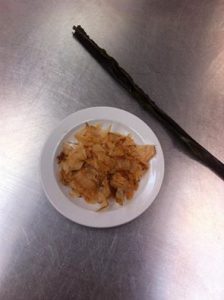
Yes, there is a difference in the taste of seaweed for sushi.
There are 3 countries that produce seaweed for sushi and that is Japan, Korea and China. Within sushi seaweed, there are several different types it affects the taste, the structure of the sushi seaweed and the way the seaweed behaves when it is used for sushi.
I have tasted seaweed for sushi from Japan, Korea and China and it tastes different.
Some seaweed sheets taste part of the sea, so it may seem surprising if you are not used to it.
Some seaweed sheets are completely neutral in taste it has an advantage over sushi because it does not affect the taste of the sushi pieces.
Some seaweed can be a little rubbery in consistency when sushi rolls are made and when eating the pieces. It gives a different feeling when biting through the sheet.
Seaweed is very healthy, and you should finally eat loose of it when you have the opportunity.
Read more about Sushi course for beginners
_
Zoë has lectured and held sushi courses for A. P. Moller – Maersk, Hugo Boss Nordic, Novo Nordisk, Novartis, Velux, Gorrissen Federspiel, Beierholm revision, Elbek & Vejrup and many more.




